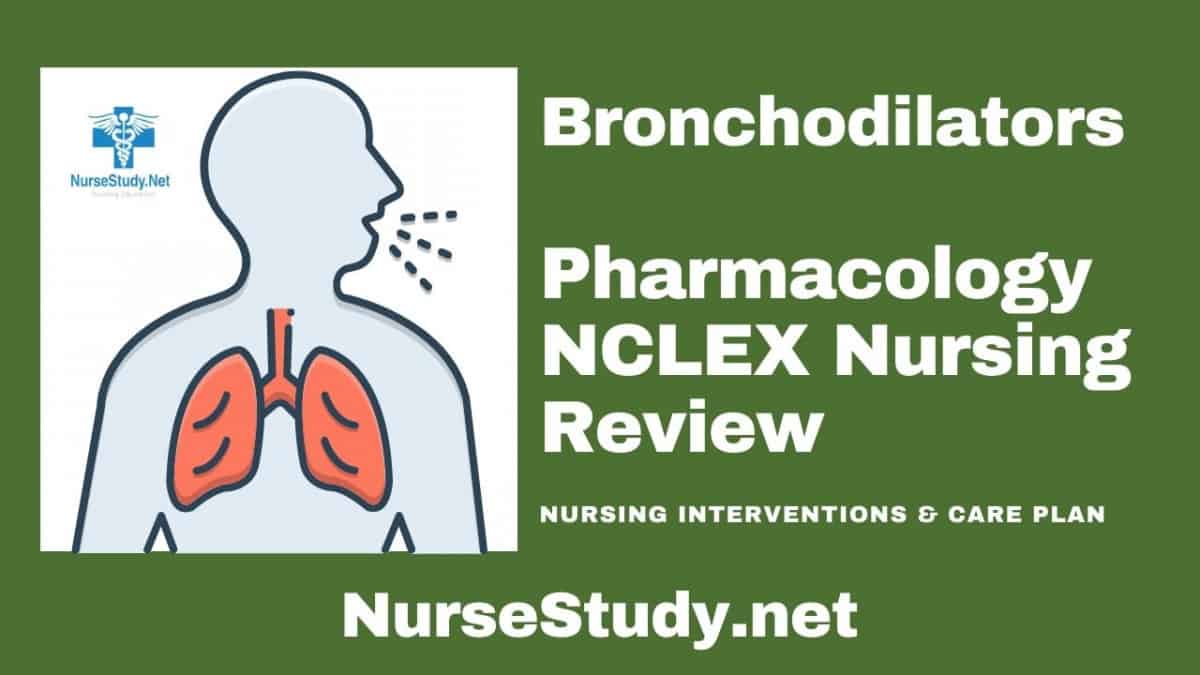Bronchodilators are medications that relax and open the airways, making breathing easier for patients with respiratory conditions. They are crucial in managing asthma, COPD, and other respiratory disorders.
Generic names: Albuterol, Levalbuterol, Salmeterol, Formoterol, Tiotropium, Ipratropium
Brand names: Ventolin HFA, Proair HFA, Xopenex, Serevent, Foradil, Spiriva, Atrovent
Pharmacologic class: Beta-2 adrenergic agonists (SABAs and LABAs), Anticholinergics
Therapeutic class: Bronchodilators
Mechanism of action: Beta-2 agonists relax bronchial smooth muscle by stimulating beta-2 receptors, leading to bronchodilation. Anticholinergics block the action of acetylcholine, preventing bronchoconstriction.
Indications for use: Asthma, COPD, exercise-induced bronchospasm, bronchitis, emphysema, and other respiratory conditions requiring bronchodilation.
Precautions and contraindications: Hypersensitivity to specific bronchodilators, cardiovascular disorders, diabetes, thyroid disorders, seizure disorders, pregnancy, and breastfeeding require careful consideration.
Drug Interactions
- Beta-blockers may decrease the effectiveness of beta-2 agonists
- MAO inhibitors and tricyclic antidepressants may potentiate cardiovascular effects
- Diuretics may increase the risk of hypokalemia
- Other sympathomimetics may increase the risk of adverse effects
- Certain antiarrhythmics may increase the risk of QT prolongation
Adverse Effects
- Tremors, nervousness, anxiety
- Tachycardia, palpitations, hypertension
- Headache, dizziness
- Dry mouth, throat irritation
- Nausea, vomiting
- Muscle cramps
- Hypokalemia
- Paradoxical bronchospasm
- Increased blood glucose levels
Administration Considerations
Available preparations: Metered-dose inhalers (MDIs), dry powder inhalers (DPIs), nebulizer solutions, oral tablets, and extended-release capsules.
Typical dosages: Vary by specific medication and route of administration. Always verify current prescribing information.
- Short-acting beta agonists (SABAs): 1-2 puffs every 4-6 hours as needed
- Long-acting beta agonists (LABAs): Usually twice daily
- Anticholinergics: Dosing varies by specific medication
Nursing Considerations for Bronchodilators
Related Nursing Diagnoses
- Ineffective breathing pattern
- Activity intolerance
- Anxiety related to respiratory distress
- Risk for infection
- Knowledge deficit related to medication administration
Nursing Assessment
- Assess respiratory status: rate, depth, effort, breath sounds, oxygen saturation
- Evaluate vital signs, particularly heart rate and blood pressure
- Assess the patient’s inhaler technique and ability to use delivery devices
- Monitor for signs of medication toxicity or adverse effects
- Evaluate the patient’s understanding of medication purpose and administration
Nursing Interventions
- Administer bronchodilators at appropriate intervals
- Monitor effectiveness through assessment of breath sounds and peak flow measurements
- Observe for adverse effects, particularly cardiovascular symptoms
- Ensure proper technique with inhaler devices
- Coordinate timing with other respiratory medications
- Document medication response and any adverse effects
Patient Teaching Associated with Bronchodilators
Demonstrate and verify proper inhaler technique:
- Shake MDI before use
- Exhale completely
- Create a proper seal around the mouthpiece
- Coordinate breathing with medication delivery
- Hold your breath for 5-10 seconds
- Wait for the appropriate time between puffs
Explain the importance of medication timing:
- Take long-acting medications as scheduled
- Use rescue inhalers only as needed
- Space multiple medications appropriately
Teach proper cleaning and maintenance of delivery devices:
- Clean MDI mouthpiece regularly
- Replace devices as recommended
- Store medications properly
Review warning signs requiring medical attention:
- Increased difficulty breathing
- Chest pain or severe palpitations
- Significant tremors or anxiety
- Decreased effectiveness of medication
Emphasize the importance of regular follow-up:
- Monitor peak flow measurements
- Keep track of rescue inhaler use
- Regular provider visits
- Annual flu vaccination
This is not an all-inclusive list of possible drug interactions, adverse effects, precautions, nursing considerations, or patient instructions. Please consult further with a pharmacist for complete information.
References and Sources
- Global Initiative for Asthma. (2024). Global Strategy for Asthma Management and Prevention. European Respiratory Journal, 55(5), 2002034.
- Rogliani, P., Calzetta, L., Coppola, A., et al. (2023). “Long-acting bronchodilators in COPD: A comprehensive review of current evidence.” Respiratory Medicine, 196, 106952.
- American Thoracic Society. (2023). “Guidelines for the Management of COPD.” American Journal of Respiratory and Critical Care Medicine, 207(2), e25-e43.
- Barnes, P. J. (2024). “Cellular and molecular mechanisms of bronchodilators.” Nature Reviews Drug Discovery, 23(1), 45-62.
